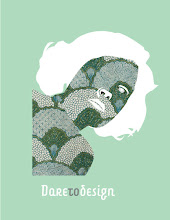So, I'm in my final month in my Masters' program, and I am in the process of making my business plan. I needed to get inspiration and education from somewhere, so I figured, "why not" and looked up some great business development professionals. The first one I looked up was a man by the name of Mark Zwilling.
He is the founder of
Startup Professionals, a contributor to Forbes, Harvard Business Review, and Business Insider, an advisory board member of numerous startups, and many other important business occupations.
In Zwilling's
Top Ten Investor Turnoffs Around Business Plans, he mentions a few things that investors are looking for. One, is the executive summary. Investors will flat out ignore your business plan if it doesn't have an executive summary, which is quite obvious if you think about it. What's a business if you can't sum it up and give the reader some sort of perspective as to what he is reading? Another important component of a business plan is your grammer. As he said,
don't embarrass your english teacher, because the second your prospective investor sees a period set where it shouldn't be, you can kiss that investment goodbye. Another important thing that the business owner must consider is whether or not his business plan is too wordy. Noone, not even investors, like gigantic word blocks, especially when the word blocks aren't needed for the business plan to work.
Overall, Zwilling's Forbes article was a delight to read, and if you didn't read it, here it is.
http://blogs.forbes.com/martinzwilling/2011/02/04/ten-top-investor-turnoffs-around-business-plans/ . Now, there is another great business development professional. Well, professional
s.
Jay Turo and Dave Lavinsky are founders of
Growthink
, one of the nation's biggest strategic advisory and investment banking firms right now. Within a 10+ year career, Turo has been advising dozens of middle market, corporate and emerging clients. His big-name clients included Porche, Deutsche Bank, McKesson, Infospace, Samsung, & Paramount Pictures, while his emerging clients include names such as Accelerant, C8 Medisensors, Dakim, DCIP, Free Conference, Fresh Games, Green Medical, Integreon, L3D3, Mobeze, MyPublicInfo, Nolatek, Ometric, Pocketsonics, Precision Time, Raise Capital, Recoup IT, Research Scientists, Sandel Medical, Spring Medical, Telverse, Thrombovision, XCOM Wireless, and Xorbent. Dave Lavinsky isn't the kid in this partnership, either. The man has developed over
100 business plans and has managed over 150 client engagements across all of
Growthink's practice areas.
Well, they both have offered their insight on what they think the key components of a successful business plan is. According to both businessmen, there are, like Zwilling, ten key components within a business plan. One is the executive summary. According to Lavinsky, "
The Executive Summary must communicate to the prospective investor the size and scope of the market opportunity, the venture's business and profitability model, and how the resources/skills/strategic positioning of the Company's management team make it uniquely qualified to execute the plan.". (Lavinsky, 2011)
The next three component were company analysis, industry analysis, analysis of customers, and analysis of competition. The one keyword in all three of them was the word
analysis. You must analyze as much as you can in order to convey to your investor the notion that you have a backbone and the business mind in order to turn profits. Then you have the marketing plan, a document that details how your business will reach their intended market. Key components of
that include
- A description of the company's desired strategic positioning
- Detailed descriptions of the company's product and service offerings and potential product extensions
- Descriptions of the company's desired image and branding strategy
- Descriptions of the company's promotional strategies
- An overview of the company's pricing strategies
- A description of current and potential strategic marketing partnerships/ alliances
Next up are the operations/design and development plans. They detail the internal strategies to build everything from concept to reality. According to Lavinsky, you must be able to layout what functions are required to run the business, what milestones must be reached before the venture can be reached, and how quality can be controlled.
Then you have the financial plan, the management team, and the appendix. The financial plan simply lays out the profits and and revenue structure. Like the executive summary, if your investor doesn't know how you're going to make money, well don't expect anything to come from that meeting. The management structure demonstrates that your company has the human resources need to be successful. And finally the appendix supports the entire business plan. According to both Turo and Lavinsky, it is important to place financial projections in your appendix.
And there you have it. Some guys that I have read about and learned from. Hope my business plan is enough to convince investors now.















































